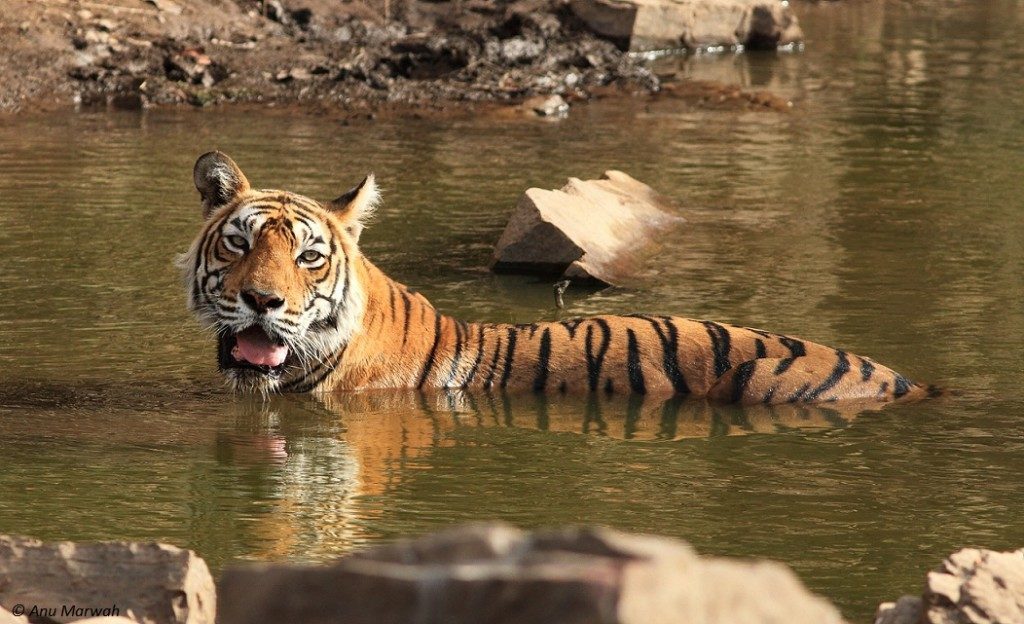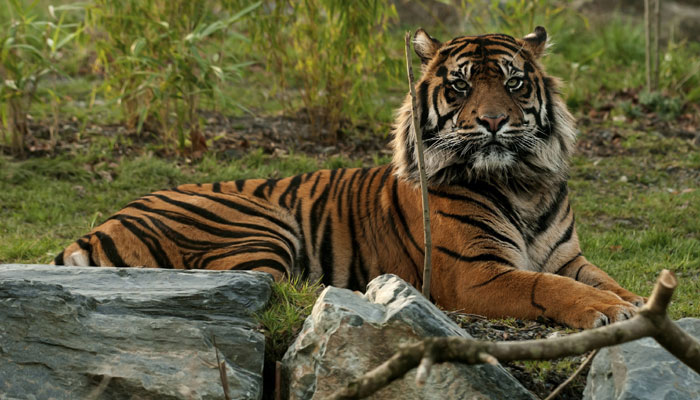Royal Bengal Tigers are the pride of the Indian forests. The beautiful stripped big cat is known for its royal attitude, solitary living and fierce protector of its territory in the wild. However, these wonderful rulers of the dense forest reduced in the numbers over the time within a century and become the endangered species due to the extreme human interference in their natural living abode. They reduced to around 4000 in numbers from hundreds of thousands in the wild. However, with the strict implementation of the tiger conservation policies of the Government, the number of the Bengal tigers has been increased in India within a few years in the various tiger reserve forests. The Ranthambore National Park is one such Tiger reserve forest in which the tiger population has been increased in the recent times.
The Ranthambore National Park becomes the most famous tiger reserve forest in the world for the tiger sighting. The safari organized in the Ranthambore Park for the forest excursion is considered best for exploring the diverse flora and fauna of the forest. The diurnal tigers of Ranthambore do not shy away from the safari vehicle contrary to the tigers of the other forests which make this forest a paradise for tiger lovers. There are many tigers of Ranthambore famous for one or other reason but the tigress Machli who died in August 2016 was the most famous tigers in the world for being a camera-friendly tiger. She was the oldest tiger in the wild on earth at the time of her death as she was 19 years old which was the highest age for a tiger in the wild at that time.
Life of Machli:
The exact date of birth of Machli is not known, but she was spotted in the year of 1996 or 1997 and she was one of the cubs in a litter of three. Her mother also had the same name Machli due to a fish-like stripe on her face and her daughter inherited the name as she also got the same fish-like stripe on her face. Machli was the dominant one among the cubs of the litter and learned the hunting skill at a very early age. She started to hunt her prey on her own even before she turned two years old and started ruling a part of her mother’s territory. She has impeccable hunting style and known for her diverse hunting skills and due to which she survived in the wild so long at the ripe age of nineteen. Even though she had lost her one eye and one canine tooth, she managed to catch and kill her prey with her unique hunting skills for many years.
 Machli was an exceptional tiger in the wild in many ways. Generally, tigresses have two or three litters in their lifetime, but Machli had five litters in a period of seven years and became the proud mother of eleven cubs among which four were males and seven were females. It is said that more than half of the tiger population in Ranthambore National Park are the descendants of this legendary tigress. The cubs of Machli increasing the population of the Sariska Tiger Reserve as well when two of her female cubs were relocated from Ranthambore to Sariska Tiger reserve in 2008.
Machli was an exceptional tiger in the wild in many ways. Generally, tigresses have two or three litters in their lifetime, but Machli had five litters in a period of seven years and became the proud mother of eleven cubs among which four were males and seven were females. It is said that more than half of the tiger population in Ranthambore National Park are the descendants of this legendary tigress. The cubs of Machli increasing the population of the Sariska Tiger Reserve as well when two of her female cubs were relocated from Ranthambore to Sariska Tiger reserve in 2008.
Fame of Machli:
Since her young age, Machli had been known for her sharp hunting skills and impressive strength. But, the incident of her fighting with a 14-foot long huge crocodile and killing it after an hour-long battle in 2003 makes her famous among the wildlife lovers in the world. The incident was being recorded on the video camera by the tourist and the video clip of the fight became famous instantly. However, during this fierce fight, she lost her two canine teeth, which are considered very important for any wildcat to hunt the prey in the wild. But, even after losing the canine teeth, she hunted her prey herself with the newly developed skills, raised her cubs, taught them hunting and protected her cubs from other male tigers. It was really an amazing courage for a wild animal which makes her an exceptional phenomenon in the wild.
 Machli was a fierce cat when it comes to protecting her cubs or safeguarding her territory from other tigers in the vicinity. Due to the popularity of the tigress, the Ranthambore National park earned around 60 Crores rupees per year from the wildlife tourists from all over the globe who visited the park fascinated by the tigress. Her contribution to the wildlife tourism in Ranthambore also earned her the “TOFT Lifetime Achievement Award” and later in 2013, a commemorative postal stamp and cover issued by the Indian Government to honor the contributions of this legendary tigress. Machli is the most photographed and documented tiger in the world. Many documentaries and movies were made featuring her and books were written about her. She has earned the titles like Tiger Queen, Queen of Ranthambore, Lady of the Lake, Queen of Tigers, etc. by the wildlife enthusiasts and wildlife media.
Machli was a fierce cat when it comes to protecting her cubs or safeguarding her territory from other tigers in the vicinity. Due to the popularity of the tigress, the Ranthambore National park earned around 60 Crores rupees per year from the wildlife tourists from all over the globe who visited the park fascinated by the tigress. Her contribution to the wildlife tourism in Ranthambore also earned her the “TOFT Lifetime Achievement Award” and later in 2013, a commemorative postal stamp and cover issued by the Indian Government to honor the contributions of this legendary tigress. Machli is the most photographed and documented tiger in the world. Many documentaries and movies were made featuring her and books were written about her. She has earned the titles like Tiger Queen, Queen of Ranthambore, Lady of the Lake, Queen of Tigers, etc. by the wildlife enthusiasts and wildlife media.
Demise of Machli:
The demise of Machli had saddened all the tiger lovers of the world, even though it was anticipated for a long time as she was the world’s oldest tiger in the wild at that time and very old to hunt on her own. The park authority used to feed her without compromising her dignity by providing her bait in the wild. And, on 18th August 2016, she laid down to never wake up again. Machli was given the traditional Hindu funeral and an emotional last farewell like any human being in a public ceremony. She was covered by the white cloth, adorned with the flowers and garland, and cremated in the presence of a crowd of the forest officers, forest guards, safari guides and drivers, and local people. It was a very exceptional and special movement in the history of the wildlife conservation in the world. Though Machli is no more roaming in the Ranthambore National Park, her legends still roam and make her alive in the heart of the wildlife-lovers around the world.
